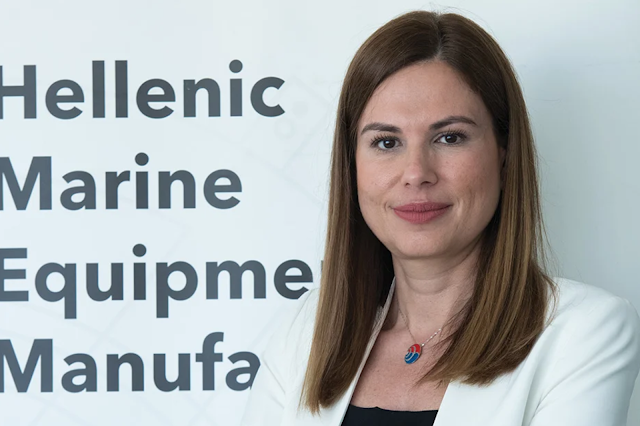| Maria Deligianni, National Director, Eastern Mediterranean, CLIA |
The cruise industry has a vision to become the most sustainable form of tourism, reducing emissions at sea and in ports, fully implementing the concept of circularity for waste management and supporting sustainable practices in destinations.
CLIA members have committed to Net Zero carbon cruising by 2050 as part of the industry’s focus on sustainability, which remains a top priority for us. This commitment is consistent with the target set by the Paris Agreement and is supported by the industry’s intermediary objective to reduce the rate of carbon by 40% across the global fleet by 2030, compared to 2008, which is consistent with the International Maritime Organization’s (IMO) Initial Strategy for GHG reduction.
In order to reach this goal, cruise lines make significant investments in new, technologically updated vessels. In view of the coming European regulations that will accelerate the changes to our industry the next two years, we are in a good place with more than €45 billion investment in new ships and the youngest fleet ever.
During the recent CLIA’s 2023 European Summit, in Paris, cruise lines, shipyards and marine equipment manufacturers issued a Joint Declaration calling on the European Commission and European governments to include cruise ship building and the maritime technology sector in the forthcoming Net Zero Industry Act.
The Joint Declaration calls for:
• faster access to funding for sustainable shipbuilding and maritime equipment manufacturing to support Europe’s world-leading position in this sector.
• expansion of support and incentives for retrofit programs and deployment of renewable energy for maritime.
• a dedicated maritime program as part of the EU Pact for Skills so that digital, green, and technical skills stay in Europe.
• maritime to be placed at the heart of the EU digital strategy to enable knowledge-share of the sector’s advanced digitalization practices.
At the same time, cruise lines are also reducing the environmental impact of their hotel activities, by applying best in class water treatment systems, including full segregation and recycling of waste.
Our latest (2022) Global Cruise Industry Environmental Technologies and Practices Report shows the cruise industry’s credentials as an innovator and early adopter of environmental technologies, which is also confirmed on the way travelers see our industry: according to CLIA data of 2022, the percentage of travelers who say the cruise industry is a leader in responsible travel reached 51%, a 9% increase over the past year, and this is a very important message for the industry.
Leading the decarbonization race
Innovation and engineering are at the heart of the industry’s vision for net zero carbon cruising. The cruise industry continues to lead the way by investing billions to incorporate new technologies and accelerate development of sustainable marine fuels —in particular, engines capable of using sustainable marine fuels. These are the fundamental building blocks for the decarbonization of global shipping, and we are acting now for the future.
Every new ship brings new technologies and greater efficiencies that make them more sustainable. A major advance has been the growth in new ships powered by liquefied natural gas (LNG). More than 60% of new-build capacity in our industry will rely on LNG fuel for primary propulsion. The use of LNG results in 95% to 100% fewer particulate matter (PM) emissions; virtually zero sulphur emissions, and an 85% reduction in nitrogen emissions. As a transitional fuel, LNG provides real benefits now, but also allows LNG-ready ships to adapt to a future generation of sustainable marine fuels.
At the same time, more than 79% of the global capacity utilizes Exhaust Gas Cleaning Systems (EGCS) to meet or exceed air emissions requirements, representing an increase in capacity of 7% compared to 2021. Additionally, 88% of capacity of non-LNG new builds will have EGCS installed, in line with already high historical level of investments.
Cruise lines are also investing in pilot projects aimed at developing sustainable marine fuels like biofuels and synthetic fuels. There is also a lot of research and development into fuels like biofuels, methanol, ammonia and hydrogen.
In addition to all these, there is a growing investment to equip ships to plug in to shoreside electricity (SSE) where available. In fact, around 40% of the global cruise fleet by capacity has already been fitted to operate on shore-side electricity, which represents an increase of 20% year on year, and the numbers are expected to continue to rise, as 209 CLIA member ships (75% of the global cruise ship fleet by capacity) will be capable of connecting to shoreside electricity in the next five years, allowing engines to switch off at berth for significant emissions reduction. The benefits of SSE are very important: reducing ship emissions by at least 10% –depending on the ship operations– and significantly reducing local atmospheric emissions at ports, among others.
Still, even when fitted with the necessary equipment ships can only plug into ports that have put in place the necessary infrastructure to provide the electricity to the ships. Currently, there are only 29 ports worldwide that have one or more cruise berths able to provide SSE. This represents less than 2% of the world’s ports. In Europe, we only have 11 cruise berths equipped in Europe, all situated in the North of Europe. This is a very low number when you consider that we operate in more than 300 ports in Europe, so there is a long way to go.
Challenges
The cruise industry is turbo-charging maritime innovation, but we now need clear support from governments and policy-makers to ensure that our efforts will find fertile soil.
The European Union has adopted an ambitious plan to reduce emissions from the maritime sector with the Fit for 55 package. The cruise industry shares with European governments a vision of a sustainable blue economy. The industry is stepping up and can deliver on our promises, but clear support is needed to ensure that the right infrastructure is developed and is accessible, and that the right incentives can guarantee the development and delivery of sustainable maritime solutions.
Considering the current profile of the cruise fleet and based on the current technology availability forecast, the decarbonization of the cruise sector will rely primarily in the short term (2035-2040) on drop-in advanced biofuels, methanol and bio methane. In the longer term (2040-2050), research in new propulsion solutions includes the use of hydrogen-derived fuels or synthetic fuels or gas.
Hydrogen fuel, as such, and as a primary propulsion energy will have limited applicability for cruise vessels, considering its low energy density and its lethal characteristic. Similarly, ammonia raises significant safety concerns and is unlikely to be adopted for passenger transport.
In this context, to reach the objectives set by the FuelEU Maritime proposal by 2025, 2030, 2035 and 2040, the cruise industry, and more widely the maritime industry, will heavily rely on the availability of drop-in advanced biofuels and biogas, until renewable fuels of non-biological origin become available at scale.
CLIA is concerned by the lack of incentives and mechanisms included in the different proposals of the Fit for 55 package to secure supply of these sustainable fuels to the maritime sector. The constraints availability for these alternative fuels is expected to be further exacerbated as other transport sectors benefit from better regulatory conditions, giving them privileged access to the biomass.
From all the above, it is clear that the cruise industry has already taken firm and robust measures towards achieving its decarbonization goals and, collectively, is committed to deliver. The cruise industry is powering European maritime industry innovation and is critical to help the EU to deliver the necessary step change towards decarbonization. It is essential that we now need a clear framework to encourage the investment and innovation that will be required for the industry to achieve the 2030 EU Fit for 55 objectives and ultimately our 2050 ambitions.
The goal of zero emissions in shipping by 2050 is not an illusion, but needs collective effort and political will in order to become reality on time.




